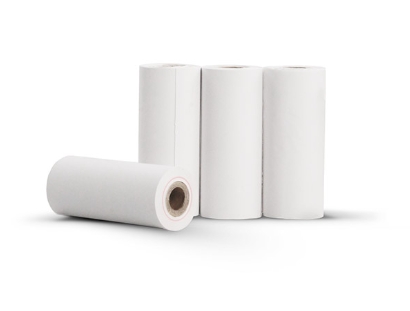What is Thermal Printer Paper?
Ever wondered how receipt printers work their magic without using ink? The secret lies in thermal printer paper, a specialized material that’s revolutionized modern printing technology.

The Science Behind Thermal Paper
Thermal paper contains special heat-sensitive chemicals that change color when exposed to heat. When your printer’s thermal head applies heat to specific areas, it creates the text and images you see on your receipts.
Components of Thermal Paper
The paper consists of three main layers: the base paper, the thermal-sensitive coating, and a protective topcoat. Each layer plays a crucial role in creating clear, lasting prints.
Types of Thermal Paper
Standard Receipt Paper
The most common type you’ll encounter at retail stores and restaurants. It’s economical and perfect for everyday transactions.
Label-Grade Thermal Paper
This premium variety offers enhanced durability and is often used for shipping labels and product tags.
Medical Grade Thermal Paper
Specially designed for medical equipment, this type meets strict healthcare standards and provides long-term image stability.

Advantages of Thermal Paper
Cost-effectiveness
Unlike traditional printers, thermal printers don’t need ink or toner, significantly reducing operational costs.
Print Quality and Speed
Thermal printing delivers crisp, clear images instantly, making it ideal for high-volume environments.
Environmental Considerations
While thermal paper isn’t traditionally recyclable, newer eco-friendly options are emerging in the market.
Proper Storage and Handling
Temperature and Humidity Control
Store your thermal paper in a cool, dry place between 65-75°F (18-24°C) with 45-65% relative humidity.
Avoiding Common Damage Factors
Keep thermal paper away from direct sunlight, heat sources, and chemicals to prevent premature darkening.
Common Applications
Retail and POS Systems
The backbone of modern receipt printing in stores, restaurants, and service industries.
Healthcare and Medical Records
From ECG printouts to lab results, thermal paper plays a vital role in medical documentation.
Shipping and Logistics
Essential for printing shipping labels, tracking information, and warehouse documentation.
Troubleshooting Guide
Print Quality Issues
Poor print quality often results from incorrect temperature settings or worn print heads.
Paper Jams and Feeding Problems
Regular cleaning and proper paper loading can prevent most common feeding issues.
Frequently Asked Questions
- How long do thermal prints last?
Properly stored thermal prints can last 5-7 years, though image quality may gradually fade. - Can thermal paper be recycled?
Traditional thermal paper isn’t recyclable due to its chemical coating, but eco-friendly alternatives exist. - Why does thermal paper turn black when heated?
The heat-sensitive chemicals in the paper react to temperature changes, causing the color change. - Is thermal paper waterproof?
Standard thermal paper isn’t waterproof, but water-resistant varieties are available for specific applications. - Can thermal paper be used in regular printers?
No, thermal paper only works with thermal printers designed for this specific type of paper.